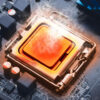Recently, manufacturers released the fastest and largest capacity micro SD cards ever made. The 1TB SD/microSD cards feature storage density that’s a thousand times more than previous cards made within the last 10 years. Plus, the fast speed of these A1, A2, and UHS-II cards is on par with high-speed options for wireless computing.
SD Cards Markets & Standardization
Micro SD cards are largely used in tablets, cameras, phones, and other hand-held devices that come with a limited amount of space. When these cards first entered the market, it didn’t take long for them to become the most preferred form factor for these devices.
Today, as more and more smartphones ship with micro SD card slots, their market is growing at a rapid pace. And although the latest iPhones don’t accommodate micro SD cards (as of yet), those made by OnePlus, Samsung, and many other phone manufacturers do.
Over the last few years, smartphone makers have lowered the amount of on-board memory that comes with their products, thus reducing their hardware costs. As a way to compensate for it, consumers often add extra storage in the form of micro SD cards. In fact, most of the 8GB, 16GB, and 32GBmicro SD cards sold worldwide are used in smartphones, however, the larger cards (ranging from 32GB to 2TB) are also rising in demand.
Micro SD cards use is facing a surge in video cameras like tablets, automotive in-dash cameras, nanny cameras, night-vision IP security cameras, and other devices that require small form factors like consumer digital imaging. These cards are the preferred storage option as devices continue to shrink in size and cards become faster, achieve higher capacity, and display better performance.
Capacity Matters
NAND flash memory is the fundamental technology in any kind of solid-state storage device and all SD cards today. NAND flash memory chips available today utilize floating-gate processes supported by all manufacturers.
Reducing the horizontal line-width of the lithography system employed in the production of NAND memory has created advanced density storage capacities over the years. The industry standard reduced design-rule dimensions for memory to 19 nm from the traditional 110 nm. This led to smaller NAND chips and enabling micro SD cards to utilize more of them to store more data.
It is estimated that NAND chips that use 16 nm line widths will be arriving soon but the industry is beginning to notice the drawbacks of scaling to smaller lithography. By 2022, NAND suppliers are going to launch the next-generation technology that will go vertical and provide way higher densities compared to the current one.
Nearly every major NAND supplier has 3-D technologies under development right now. In the 3-D concept, individual cells are grounded to allow them to be thinner, and then piled extra on top of each other so there are more than 1 cell within the same horizontal plane. This means the micro SD cards will look the same but the new 3-D processes may increase reliability, creating new uses for the cards.

High-Performance SD Card Storage Solutions for Automotive Industry
Accelerated Memory Production Inc. is a proud executive member of SD Association, our SD/microSD cards are designed and built based on the standard set by SD Association to meet the precise environmental demands, quality, and reliability of several industries including military, security, networking, and transportation. We provide automotive manufacturers with capacities of up to 64GB and flexibility of fast read/write speeds to enable a wide range of high-performance, intelligent in-vehicle applications. To know more, please give us a call at 714-460-9800 or leave us a message online.






